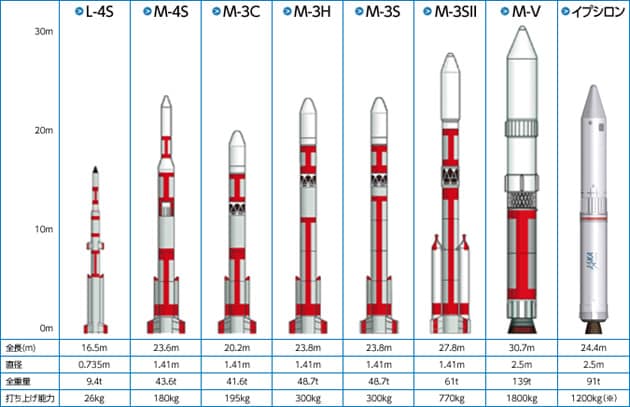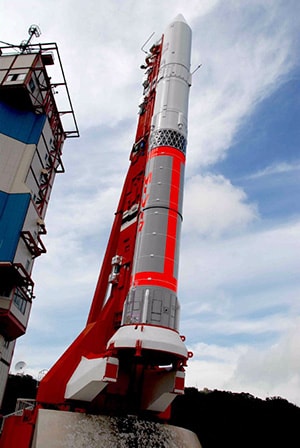
- Semiconductor Technology Now
Technology
Successors to the pencil rocket, including the Baby and Kappa rockets, grew steadily larger. They were followed by the Lambda series, one of which (L-4S) made history by bringing Japan's first satellite Osumi into orbit in 1970. The feat was attained after four failed launches, making Japan the fourth country in the world to launch a satellite after the Soviet Union, the U.S., and France.
Soon afterwards, Japan began to make serious attempts to launch satellites with the development of the M (for mu in the Greek alphabet) series of rockets. The first generation M-4S rocket successfully threw Japan's first scientific satellite Shinsei into the orbit in 1971. The fourth generation M-3SII rocket launched two probes into orbits, including Sakigake and Suisei, to observe Halley's Comet in 1985.
 |
 |
All Japanese rockets from the pencil rockets through to the M series were solid-fuel rockets, meaning they used solid propellant. Liquid propellant is the preferred type of fuel for larger rockets, and the use of solid propellant is generally reserved for rockets with minor missions. Defying this conventional notion, one of the M series rockets (M-3SII) successfully escaped the Earth's gravity using solid propellant at all stages, becoming the first solid-fuel rocket in the world to achieve this feat.
The fifth generation M-V rockets were the culmination of Japanese solid-fuel rockets. Although the fourth vehicle suffered a launch failure, all others made it into space and contributed to the advancement of Japanese space science through their missions, including the releases of Mars probe Nozomi in 1998 and asteroid probe Hayabusa in 2003.
The M-V program was terminated in 2006, much to the regret of its many admirers. The development of its successor, the Epsilon rocket, is now underway. To find out more about this project, please refer to my interview with Professor Yasuhiro Morita at JAXA in the Scientist Interview (Japanese content) section.



















